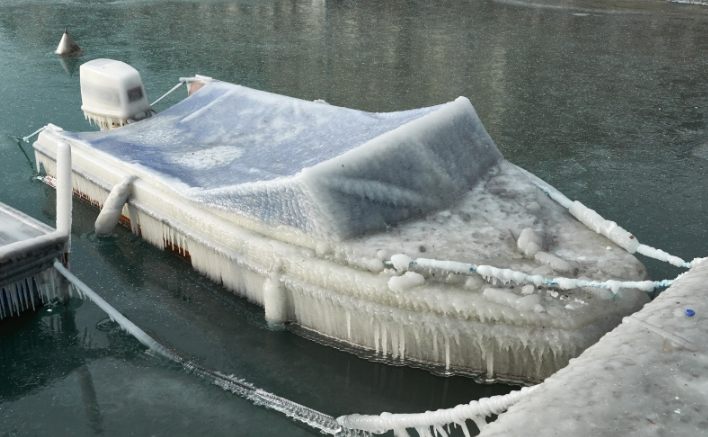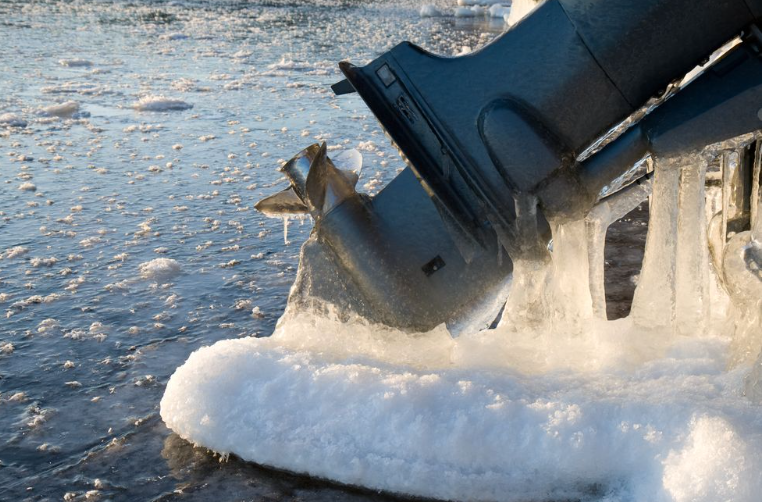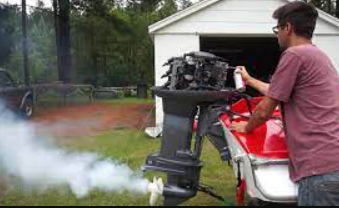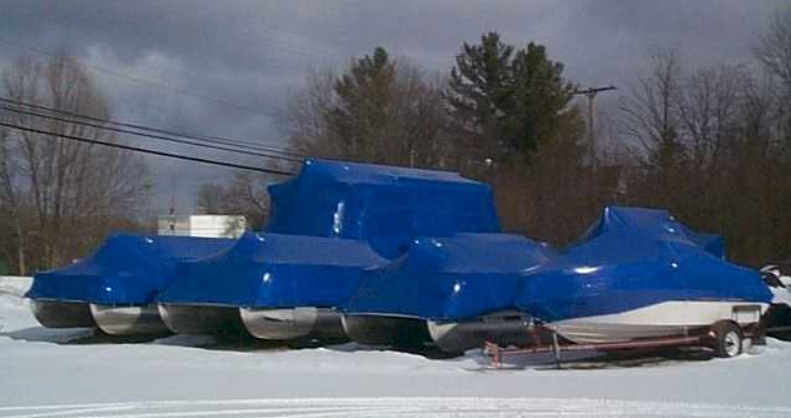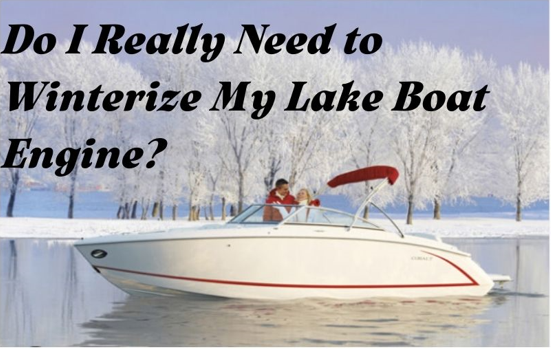
For most boaters in the Northern states, Labor Day marks the end of Summer. Kids go back to school; evenings are filled with chilly breezes and early darkness and many boats start making an exodus from their lakeside docks. It is a sad, sad time of year. The good news is that it is standard practice to get your boat winterized and stored for the winter, a no brainer for everyone preparing to hunker down until spring. What about those whose lakeside fun doesn’t end with a specific date every year. Do they still winterize their boat engines? The answer is a firm YES!
Regular maintenance is usually required either annually or every 100 hours. Even if you don’t fully winterize your boat, you should take care of annual maintenance. Whether you are pulling your boat at the first nippy evening or lucky enough to keep you baby in the water year-round there are several items that are a must to address.
First and foremost, do you live in an area that can get cold enough to freeze? Even one freeze can damage an un winterized motor. By far the greatest danger of winter boat damage comes from water, which is one of the rare liquids that expands when it freezes. If you live in a place where the temperature dips below freezing occasionally, you should winterize systems such as the water holding tank, showers, livewells, faucets and the head system — if your boat has them — and don’t use them during winter. But what do you do with the engine? An outboard is easy. Tilt it down to drain it, and bump the starter to clear the water pump. If you have a closed cooling system, double check that your antifreeze solution is up to snuff. For a raw-water I/O or inboard, make sure, after every use, that you drain the water that lurks internally. Usually, there are drain plugs in the block and on the back bottom of the exhaust. After a few times performing this procedure, you’ll be a pro. Tilt the outdrive down and bump the starter to allow the water pump to fully evacuate.
Fuel Care is Crucial. Treating fuel in the boat’s fuel tank and in the engine is also a step in the off-season storage routine. Even if you decide you don’t need to have the engine flushed of water, if the boat will be sitting for more than a month, “winterizing” the fuel tank will help ensure that the engine will start and run smoothly when you’re ready to hit the water again.Drain the fuel or run it out. Fuel sitting in a carburetor bowl for a long period will cause gumming and deposits and in lines may block delicate jets. In North America and places where ethanol is added to fuel, the alcohol in the gas encourages the absorption of water. Either drain the carburetor if it has a drain screw, or start the engine with the fuel line disconnected and let it run until it stops.
What about the fuel left in the tank? f you have a large quantity of fuel at the end of the season, you can use a fuel stabilizer to keep your fuel from spoiling over the winter. Most small outboards rarely have fuel tanks larger than six gallons. This may be more work and expense than it is worth. If you have a four-stroke outboard just get a funnel and drain the remnants into a car or dispose of them at a marina. Don’t put two stroke pre-mixed oil in your car. Most marinas and gas stations have waste fuel facilities, though there may be a nominal charge if you don’t store your boat there.
Fog the engine. The decision to fog an engine has nothing to do with the temperature and everything to do with its frequency of use. If you won’t be using the engine for more than six weeks, fogging it is pretty cheap insurance Part of the problem with deciding whether you should fog lies in the fact it’s difficult to predict when you’ll use your boat next. Sometimes, a prolonged cold snap will cause a period of inactivity, but most often it’s the real world intruding into our boating lives that’s the problem. While you might have intended to go boating at least once a month, several months can slide by before you know it. Fogging the engine with a fine layer of special oil will prevent rust and corrosion while the engine sits. A spray can of fogging oil will last you a long time with a small engine and is available at any marine or standard auto parts store.
In cold climates, many boat owners combine the “winterization” process with annual maintenance. This usually includes:
- Changing the engine oil and oil filter
- Checking or changing the gearcase lubricant in an outboard or sterndrive
- Changing fuel filters or spark plugs
- Testing the batteries
- And any other maintenance specified by the engine or boat manufacturer.
At its most basic, winterizing means draining any water from the engine, treating your remaining fuel, fogging the engine, and doing regular maintenance. Regardless of location, winterizing your lake boat’s engine can help avoid costly damage and make opening the boat up for spring a lot less problematic. Winter is coming no matter where you live so get those boats ready!
Posted by Scott Freerksen “The Lake Guy”

